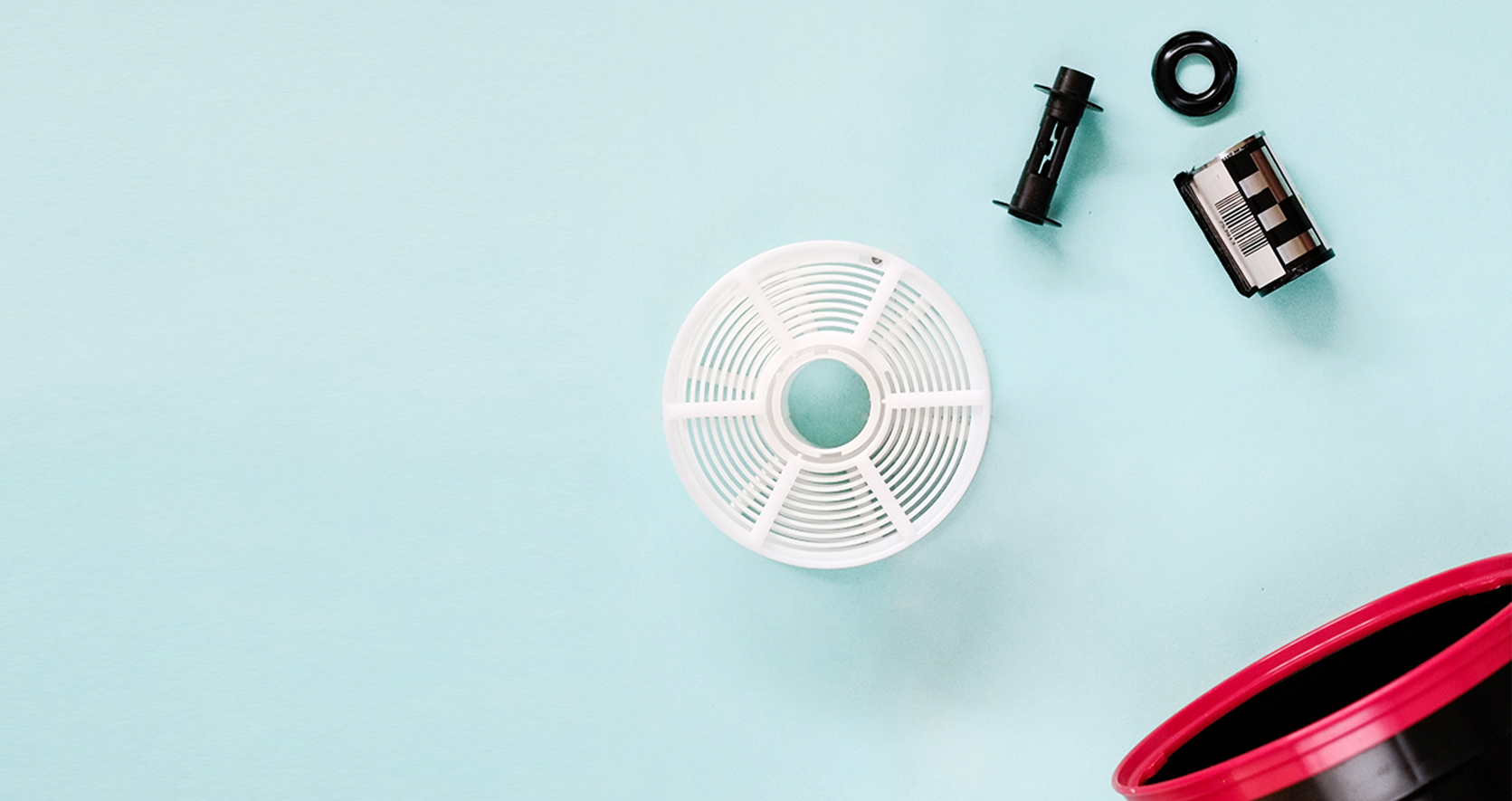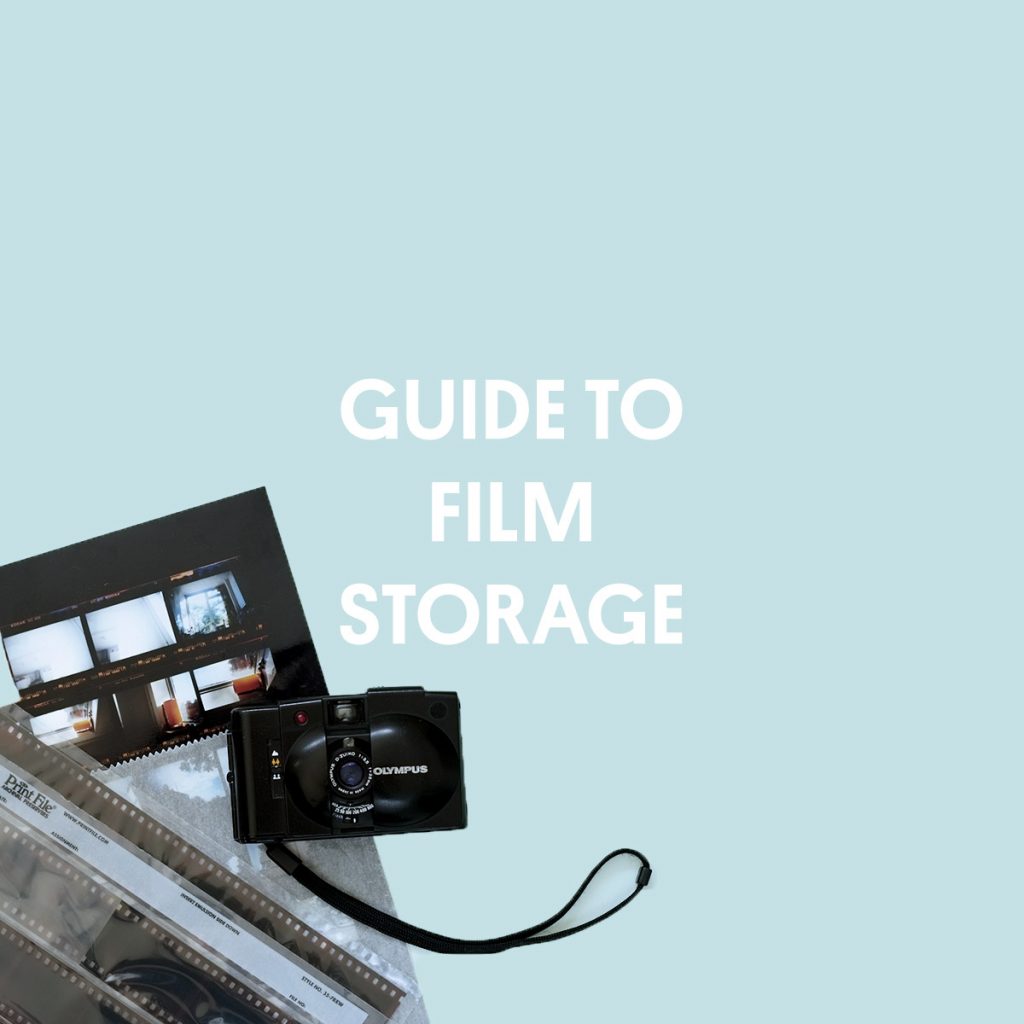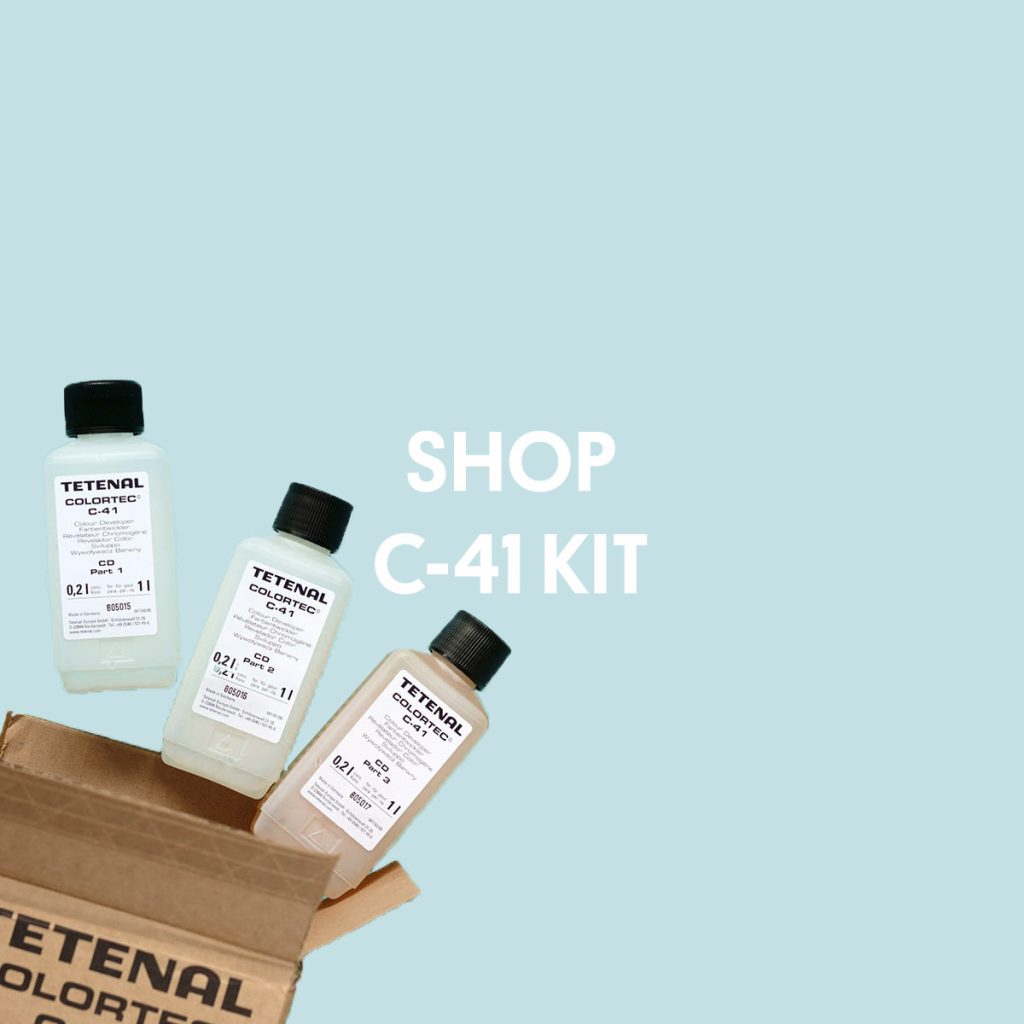How To Develop Colour Film
Parallax presents a guide to colour film processing, walking you through every step of processing colour negative film at home.
You’ll be surprised at how easy it is to develop your own colour film. We’ll show you how, with the stuff on the list below, you can process colour negative film in eight steps.
You will need:
Tetenal C41 Kit
Developing Tank
Changing Bag
Thermometer
Storage Bottles
Film Opener (or a Bottle Opener)
Scissors
If you want to develop colour film at home, we have a Colour Film Processing Bundle which contains everything you need.
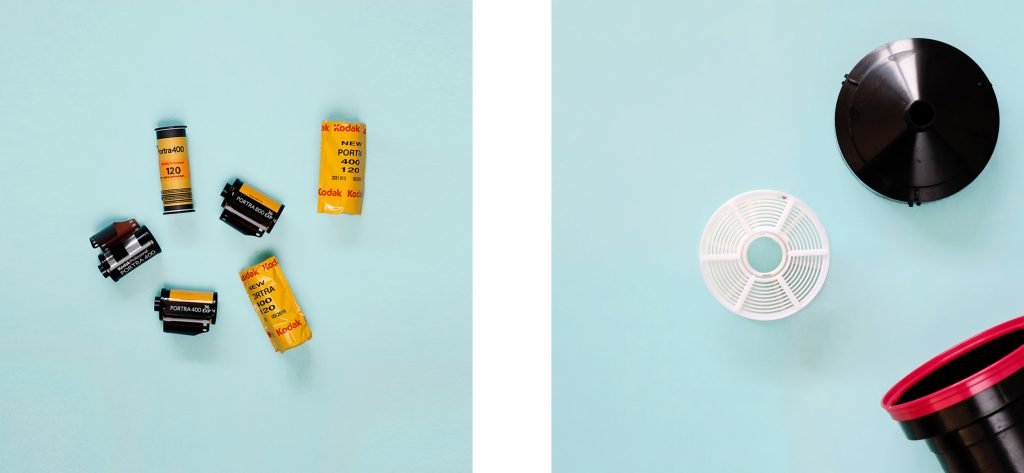
1. Load The Film
To start off you will need to put the processing tank, with the lid off and the reel removed, into your changing bag. Or have it laid out and easy to reach if you’re using an actual dark room. Alongside this you will need the film opener, some scissors, and your film. Close both zips on the changing bag and put your arms inside the sleeves, the cuffs should be tight enough around your arms to prevent any light getting in.
If you are processing 35mm, use the opener to remove the top ring of the film canister and pull out the roll of film. Carefully cut the tongue off the film, leaving you with a straight edge that goes all the way across the surface. If it is 120, then just unravel the roll and detach from the backing paper.
Changing Bag
Once your hands are inside the changing bag, pick up the reel and make sure you can feel both notches on the outer edge are aligned. You then need to slide the end of the film under the two notches until you feel something catch the sprocket holes. If the film has gone in straight you will be able to turn both sides of the reel in an alternate back and forth motion, moving the film along as you go. We would definitely recommend getting hold of some exposed film to try this out for the first time. You’ll get the hang of it and be loading the reels without thinking soon, but it can be tricky the first time.
Once the film is on the reel you put it inside the tank. Make sure the central funnel rod is in place. After the reel is in, put the funnel lid on and turn it until it locks in place. Your film is now light-tight and it is safe to take the whole tank out of the changing bag. Or turn the light on if you’re in a dark room.
2. The C-41 Developing Kit
We use the Tetenal Colortec C-41 Developing Kit to process colour film. The kit contains all the chemistry you need, pre-measured, ready to be diluted with water. The kits come in two sizes, 1L and 2.5L. We’ll go through the instructions for the 1L kit, but same applies to the 2.5L, you will just need larger jugs and storage bottles to prepare and store the chemistry.
The big difference when you develop colour film as opposed to black and white is the temperature of the chemistry. Whereas with black and white film you use your developer at 20°C, with colour it needs to be 30°C. The Tetenal kit gives times for 38°C and 30°C. We would always recommend the lower temperature when agitating by hand. It extends the development time and will give a more even result.
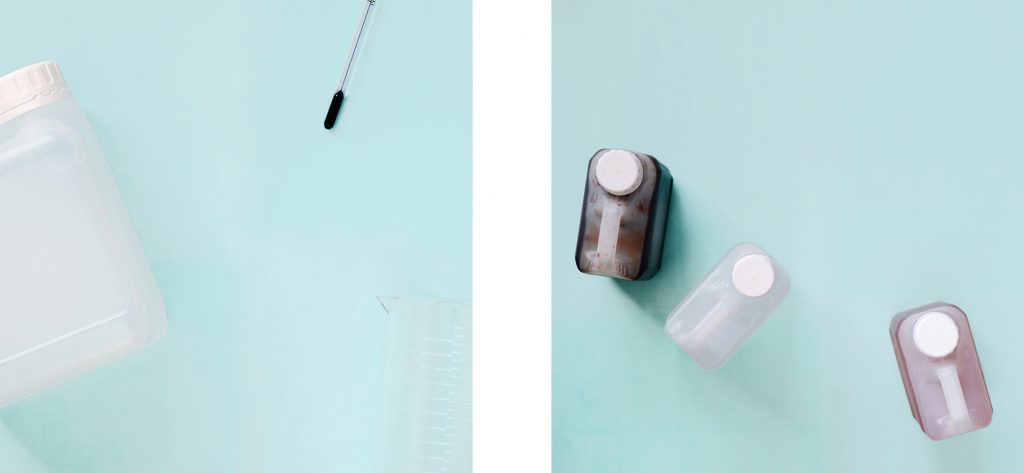
3. Mix Up Your Chemistry
Mix up your developer first. This comes in three 200ml bottles, part 1, part 2 and part 3. Pour each bottle, in order, into a mixing jug. Then, top up with water to make 1l of developing solution. This is where the larger container of water (like a bucket or storage tub) comes in. If your developer is below 30°C fill the container with warm water and set your mixed up chemistry in it to bring it up to temperature. This is easier if it’s in a storage bottle as there is no chance of it being contaminated by the water.
Next up is the bleach-fix, sometimes knows as blix. Here you will have two 200ml bottles. Pour part 1 and part 2 into a mixing jug, then top up with water to make your 1l solution. As the bleach-fix follows the developer in the process it also needs to be at 30°C. The temperature isn’t as crucial as the developer though, so don’t worry if it drops a degree or two.
Last to be mixed up is the stabilizer. Add the one 200ml bottle to 800ml of water to make your 1l solution.
4. Soak The Film
It is important to keep the developer at 30°C when you process colour film. To avoid a temperature drop and prepare your film you need to warm the tank up. Fill your tank, with the film inside, with 30°C water and leave for 5 minutes before starting to develop. After the 5 minutes, pour the water away.
5. Develop Colour Film
Now you’re ready to develop your film. The first chemical to go in is the developer. Check it is at the correct temperature and set a timer going. A clock, or your phone, will work fine for this. Slowly pour enough of the developer into the central funnel of the processing tank and securely fit the flat lid. Agitate the film by turning the tank upside down, then back up again. If you are processing in a particularly cold space, you will want to place the tank into the water jacket for a few seconds every minute. This will help maintain the temperature of the developer. Continually agitate for the whole of development time.
For the first four rolls, the development time is 8 minutes. Increase this to 9 minutes for rolls 5-8, then 10 minutes for rolls 9-12 and, finally, 11 minutes for rolls 13-16.
As the development time nears the end get ready to pour out the developer. It’s good to have a jug ready, or a funnel into your storage container.
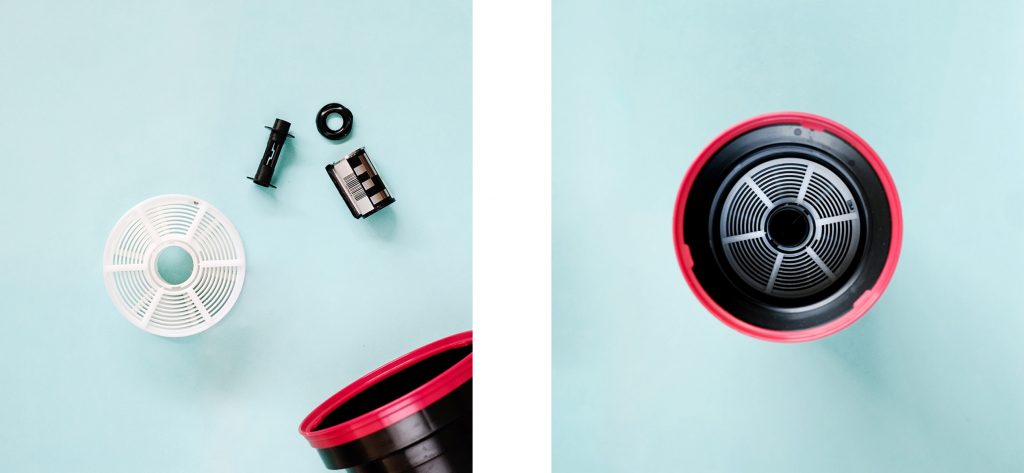
6. Bleach and Fix
Start your timer again and pour in the bleach-fix. Again, you need to agitate throughout. Tetenal recommends you extend the bleach-fix every four rolls. So 6 minutes for first four you process, 8 minutes for rolls 5-8, then 12 minutes for rolls 9-12 and, finally, 20 minutes for rolls 13-16.
Once the time is up, pour the chemistry out into a jug or storage bottle. You are now able to take the lid off the tank and have a look at your film. Don’t pull too much off the reel when checking as it can be difficult to get the film back on when it’s wet.
7. Washing
After fixing the film needs washing. Make sure the funnel lid on the tank is in place and leave it under running water for 6 minutes.
Alternatively, fill the tank and agitate, inverting the tank 5 times. Empty and refill the tank, this time invert 10 times. Next, empty and refill, then invert 20 times. Finally, empty the tank and refill ready for the stabilizer.
8. Stabilise And Hang Up to Dry
Pour in the stabilizer and agitate for 1 minute. The stabilizer will prevent any change in the colours over time. Leave to soak for a minute then return the stabilizer to the bottle.
Now it’s time to hang your film up to dry using your film clips. You can use your fingers, chamois leather or squeegees to wipe the excess water from the film before you hang it up. Use a clip at the top and one at the bottom to help prevent curly film once it’s dry.
That is all there is to it. You should now be able to see your fully developed film.
To find out more check out our instructions on How To Develop Black And White Film and How To Develop E6 Slide Film. Also, read our Guide To Film Storage.
Explore
News • Guides • Community • Film Reviews • Film Developing Times • Choose Your Film

